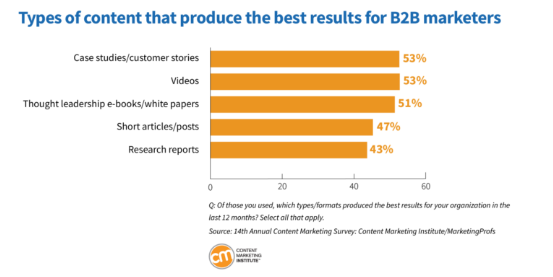The Customer Hero: Keys to Creating Case Studies That Get Results

By Nick Nelson
It’s a content marketing quandary: case studies are widely considered the most effective and impactful B2B content format, but very few of them are actually all that good.
When you are able to share a true story of your product or service making a difference for real customers, that can be an incredibly powerful tool for validating your brand in the eyes of prospects and leads. The hurdle: getting people to want to read case studies, or to even find them in the first place.
One of the top content-related questions our agency hears from B2B companies is: How can we do case studies better? Many are not seeing the results they would like, while recognizing that this content is in-demand and highly influential for buyers.
So our team has put a great deal of thought and energy into elevating the marketing case study, developing a refined set of best practices based on industry insights and our own experiences with clients. Read on for a rundown on our approach and process.
Marketing case studies get results
In Content Marketing Institute’s latest benchmarking research, case studies were tied with videos as the type of content producing the best results for B2B marketers. It makes sense that brands are able to attribute a lot of lower-funnel impact to case studies because they’re often leveraged later in the buyer journey, when decision-makers are evaluating a vendor’s capabilities in the consideration phase.
Case studies serve as excellent stepping stones for interested customers, which is why they are frequently used as CTAs in upper-funnel content. Once someone has learned about a topic related to your solutions, they can learn how you do it, lending credibility.
Demand Gen Report’s 2023 Content Preferences Survey found that case studies are far-and-away the content format that buyers find most appealing at the middle stage of their journeys. (It was also fourth-highest for the final stage, after demos, user reviews, and ROI calculators.)

Case studies are extremely valuable in marketing. That statement is intuitive enough on its own, and well supported by data. So how can you do them better?
Where many case studies miss the mark
A big problem with case studies is found in the name itself. The term “case study,” which has become popularized in business, originated with applications in scientific research, so it’s no surprise these retrospective examinations can often feel a bit stuffy and academic.
Producing a dry “just-the-facts” case study might help a decision-maker check boxes for capabilities and verify your organization’s track record, but it’s probably not going to captivate them or inspire them.
The other common issue with case studies is that they tend to be highly self-serving, and as any content marketer knows, that’s not a recipe for success. …read more
Source:: Top Rank Blog









